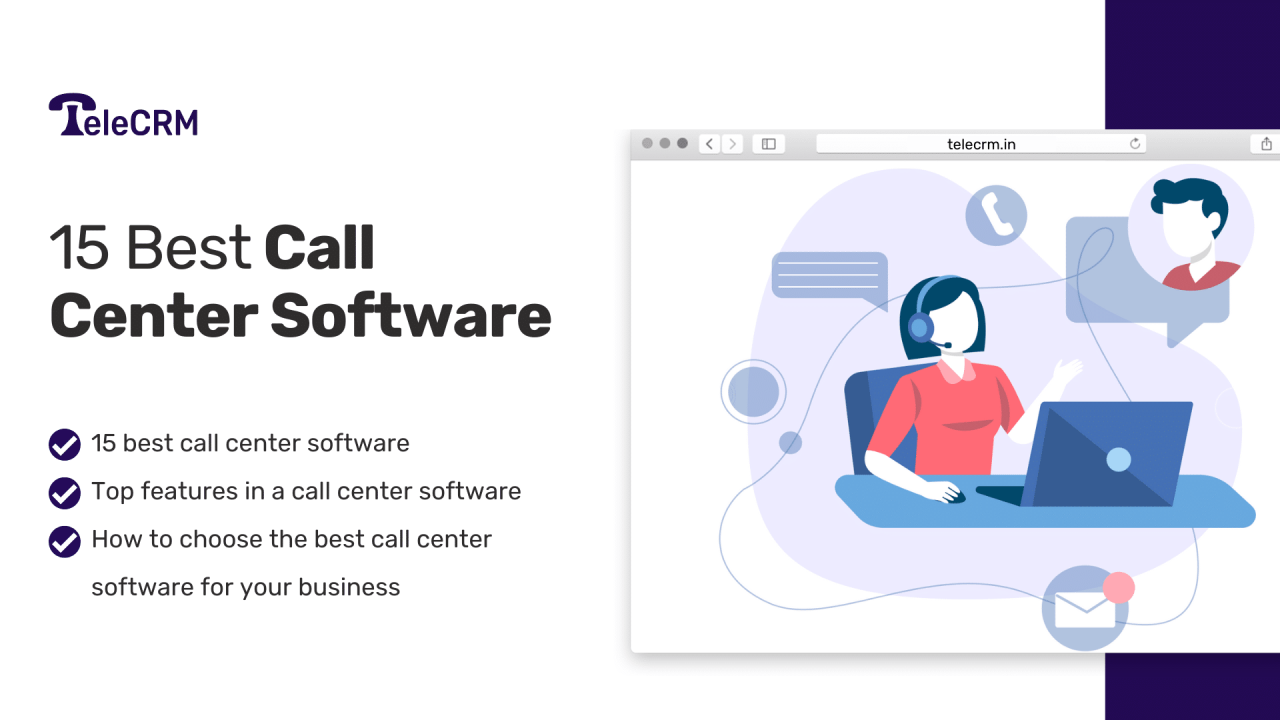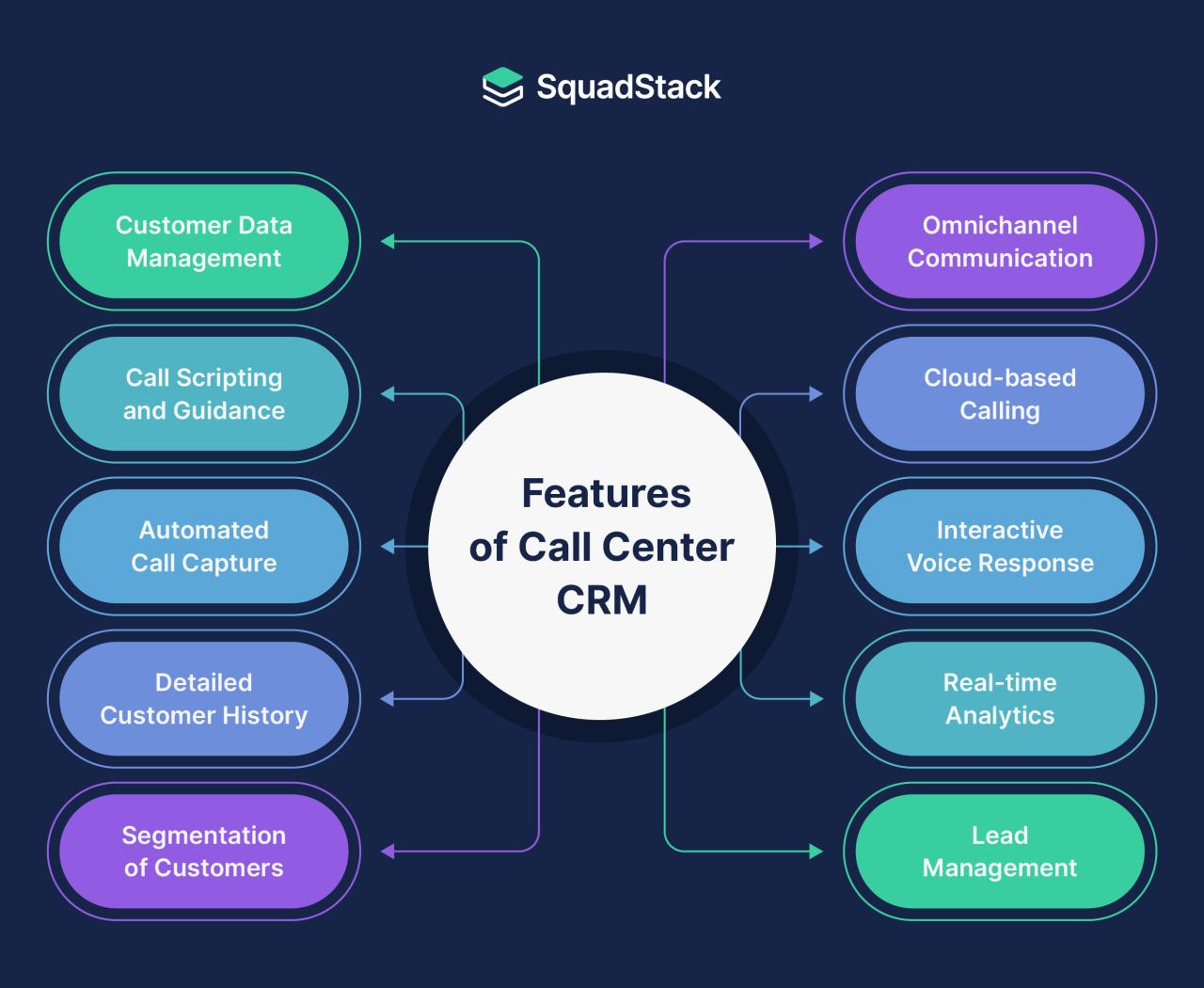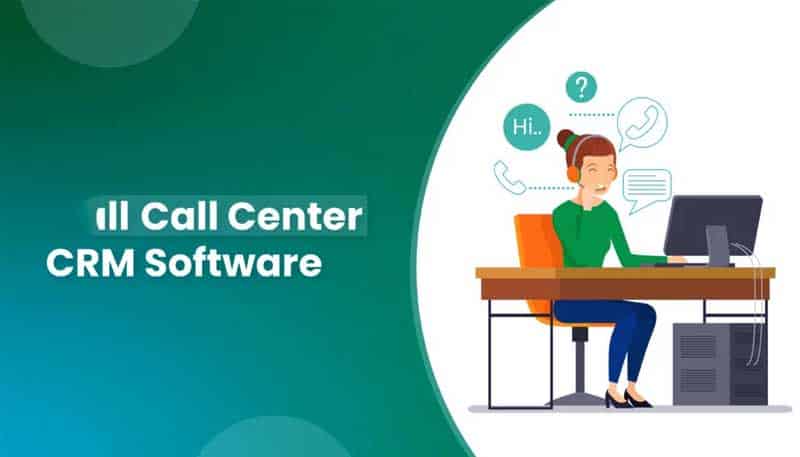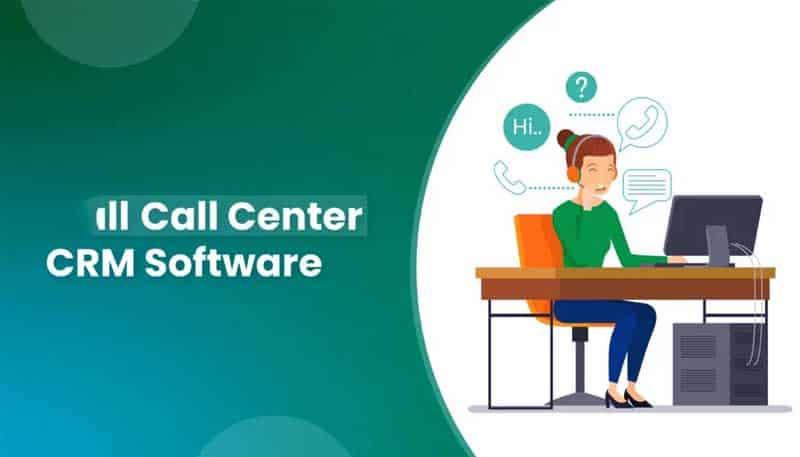Best CRM for call center solutions are crucial for modern businesses. Finding the right system significantly impacts operational efficiency, customer satisfaction, and ultimately, profitability. This guide explores key features, integration capabilities, pricing models, and crucial considerations for selecting the ideal CRM to optimize your call center’s performance.
From cloud-based options offering scalability and accessibility to on-premise solutions prioritizing data control, the choice depends on your specific needs and resources. We’ll delve into essential features like call logging, agent performance tracking, and customer interaction management, highlighting how these tools contribute to a seamless and productive call center environment. We’ll also examine the importance of seamless integration with other technologies, the impact of pricing models on long-term costs, and the vital role of robust security measures.
Call Center CRM Features

A robust CRM system is paramount for efficient call center operations. It streamlines workflows, improves agent productivity, and enhances customer satisfaction. Choosing the right CRM depends on factors like call volume, agent count, and budget, with cloud-based and on-premise options presenting distinct advantages and disadvantages.
Essential Call Center CRM Features
Effective call centers rely on several core CRM functionalities. These features are crucial for managing interactions, tracking performance, and ultimately driving improved customer service. Key features include contact management, call logging and recording, interaction tracking (email, chat, social media), reporting and analytics, and integration with other business systems (e.g., VoIP providers, help desk software). The level of sophistication of these features varies significantly depending on the chosen CRM solution.
Cloud-Based vs. On-Premise CRM Features
Cloud-based CRMs offer scalability, accessibility, and reduced upfront costs. They are typically easier to implement and maintain, with automatic updates and minimal IT infrastructure requirements. However, they might have limitations on customization and data control. On-premise CRMs, conversely, provide greater control over data and customization options. They offer higher security in some instances but require significant upfront investment in hardware, software, and IT expertise for ongoing maintenance.
The choice between these options depends heavily on the specific needs and resources of the call center.
Comparison of CRM Platforms
The following table compares five key features across three popular CRM platforms – Salesforce Service Cloud, Zendesk, and Freshdesk. These platforms represent a range of options, from enterprise-grade solutions to more affordable alternatives. The features highlighted are crucial for efficient call center management.
| Feature | Salesforce Service Cloud | Zendesk | Freshdesk |
|---|---|---|---|
| Call Recording & Logging | Robust features, including transcription and quality monitoring tools. Integrates seamlessly with various telephony systems. | Comprehensive call recording and logging capabilities, with options for agent performance analysis. | Provides call recording and logging, with basic reporting features. Integrations available but may require additional configuration. |
| Contact Management | Highly customizable, allowing for detailed customer profiles with interaction history. | Provides a centralized database for customer information, allowing for efficient agent access. | Offers solid contact management features, with options for custom fields and segmentation. |
| Reporting & Analytics | Advanced reporting and analytics dashboards, providing insights into agent performance, call resolution times, and customer satisfaction. | Provides a range of reports on key metrics, with options for custom dashboards and visualizations. | Offers basic reporting capabilities, with room for improvement in advanced analytics. |
| Integration Capabilities | Seamless integration with a wide range of applications and services. | Offers a robust API and integrations with popular tools. | Provides good integration capabilities, though the breadth of integrations may be less extensive than Salesforce or Zendesk. |
| Pricing | Enterprise-grade pricing, typically higher than other options. | Offers various pricing plans to suit different business sizes. | Generally more affordable than Salesforce and Zendesk, with options for smaller businesses. |
Integration Capabilities
A robust CRM system for a call center isn’t just a standalone solution; its true power lies in its ability to seamlessly integrate with other crucial technologies. Effective integration streamlines workflows, improves data accuracy, and ultimately enhances agent productivity and customer satisfaction. This interconnectedness fosters a holistic view of the customer journey, enabling more personalized and efficient service.Integrating your CRM with other call center technologies is paramount for optimizing operations and maximizing the return on your investment.
A well-integrated system eliminates data silos, reduces manual data entry, and allows for a more unified and efficient approach to customer interaction management. This leads to improved agent performance, reduced operational costs, and enhanced customer experience.
Examples of Successful CRM Integrations and Their Benefits
Successful CRM integrations often revolve around enhancing communication and data flow between different systems. For instance, integrating a CRM with a predictive dialer can significantly increase the number of successful outbound calls by prioritizing leads based on their CRM profiles. This targeted approach boosts conversion rates and improves overall sales efficiency. Another example is the integration with a live chat system, allowing agents to seamlessly transition from a phone call to a live chat interaction, maintaining context and providing a consistent customer experience.
This integrated approach allows for a more fluid and efficient handling of customer inquiries, leading to improved customer satisfaction and reduced resolution times. Such integrations lead to improved customer experience, increased efficiency, and cost savings.
Crucial Integrations for Call Center Efficiency
The impact of proper integration on a call center’s efficiency cannot be overstated. Choosing the right integrations is crucial for optimizing workflows and maximizing agent productivity.
- Phone System Integration: This allows for automatic logging of calls, caller ID display within the CRM, and click-to-dial functionality. The result is reduced manual data entry, improved call tracking, and faster call handling. Agents can access customer information instantly, leading to more efficient and personalized interactions.
- IVR (Interactive Voice Response) Integration: Integrating the CRM with the IVR system enables personalized routing of calls based on customer data. This ensures that calls are directed to the most appropriate agent or department, minimizing wait times and improving customer satisfaction. The CRM can also provide agents with context about the customer’s interaction with the IVR, enhancing the agent’s ability to provide efficient and effective service.
- Help Desk Software Integration: This integration creates a single view of customer interactions, regardless of the channel. Agents can access all previous interactions, including emails, chat transcripts, and support tickets, providing a complete picture of the customer’s history. This allows for more personalized and informed service, leading to improved customer satisfaction and reduced resolution times.
- Social Media Integration: Integrating social media platforms allows agents to monitor brand mentions, respond to customer inquiries, and manage customer service requests directly from the CRM. This creates a unified platform for managing all customer interactions, improving response times and enhancing customer experience. Agents can access all relevant customer information from a single interface, facilitating faster and more effective problem resolution.
- Analytics and Reporting Tools Integration: This integration provides valuable insights into call center performance, enabling data-driven decision-making. By analyzing call data, agent performance, and customer interactions, managers can identify areas for improvement and optimize call center operations. Real-time dashboards and reports offer immediate visibility into key performance indicators (KPIs), allowing for proactive adjustments and continuous optimization.
Pricing and Scalability: Best Crm For Call Center

Choosing the right call center CRM involves careful consideration of both its immediate functionality and its ability to adapt to your business’s growth. Pricing models vary significantly, impacting your initial investment and long-term operational expenses. Understanding these models and how they relate to scalability is crucial for making an informed decision.Pricing models for call center CRMs typically fall into a few categories: subscription-based plans (often monthly or annually), per-user licensing, and per-feature pricing.
Subscription plans offer a predictable monthly cost, often with tiered options offering varying levels of features and user access. Per-user licensing charges a fee for each agent or user accessing the system, while per-feature pricing allows you to select only the specific features your call center requires, potentially leading to a lower initial cost but potentially higher costs as your needs evolve.
Hybrid models, combining elements of these approaches, are also common.
Call Center CRM Pricing Tiers
The cost of a call center CRM can significantly vary depending on the vendor and the chosen plan. Below is a hypothetical comparison illustrating the pricing structures of three different, fictional, CRM providers to highlight the range of options available. Note that actual pricing will vary based on the specific features selected and the number of users.
| Feature/Provider | CRM A (Subscription) | CRM B (Per-User) | CRM C (Per-Feature) |
|---|---|---|---|
| Basic Plan (Up to 10 users) | $500/month | $50/user/month | $200/month (Core Features) |
| Standard Plan (Up to 50 users) | $2000/month | $40/user/month | $1000/month (Core + Advanced Features) |
| Enterprise Plan (Unlimited users) | $5000/month | $30/user/month | Custom Pricing (All Features + Customizations) |
| Additional Features (e.g., advanced analytics, integrations) | Included in higher tiers, add-ons available | Add-ons available | Priced individually |
Scalability and Operational Costs
A call center’s growth directly impacts its operational costs and efficiency. Scalability in a CRM refers to its ability to handle increasing volumes of data, users, and interactions without significant performance degradation or requiring major system overhauls. A poorly scalable CRM can lead to bottlenecks, reduced agent productivity, and increased IT costs as the call center expands. For example, a small call center using a per-user licensing model might find costs increasing rapidly as they hire more agents.
Conversely, a subscription-based model with tiered pricing might offer better cost predictability, even with increased user numbers. Similarly, a CRM lacking robust scalability might necessitate expensive upgrades or migrations as the volume of calls and data increases, impacting operational efficiency. Conversely, a scalable CRM allows for smooth growth without significant disruptions or cost overruns. Careful selection of a CRM with appropriate scalability is vital for managing long-term operational expenses and maintaining efficient call center operations.
User Experience and Training
A positive user experience is paramount for a successful call center CRM implementation. Intuitive interfaces and streamlined workflows directly translate to increased agent productivity and improved customer satisfaction. Effective training ensures agents can quickly and efficiently utilize the system’s features, maximizing its potential.The ideal user interface for a call center CRM should be clean, uncluttered, and highly customizable.
Agents need quick access to critical information, such as customer history, previous interactions, and relevant notes. The system should integrate seamlessly with other essential tools, such as phone systems and email clients, minimizing context switching and maximizing efficiency. A consistent and predictable design language reduces the learning curve and minimizes errors. Real-time data visualization through dashboards allows agents to monitor key performance indicators (KPIs) and identify areas for improvement.
Intuitive CRM Dashboards and Their Impact on Agent Productivity
An intuitive dashboard provides agents with a single, centralized view of essential information. For example, a well-designed dashboard might display key metrics such as average handle time, customer satisfaction scores, and the number of calls handled. Visual representations, such as charts and graphs, can quickly highlight trends and potential issues. This immediate feedback loop allows agents to adjust their strategies in real-time, improving efficiency and performance.
Imagine a dashboard displaying a customer’s recent purchase history alongside their contact details and past interactions. This allows the agent to personalize the interaction and provide more relevant assistance, leading to improved customer satisfaction and potentially increased sales. Another example would be a dashboard that visually represents the agent’s progress towards daily or weekly targets, motivating them to stay focused and productive.
Such immediate feedback and clear visualization of progress can significantly impact an agent’s motivation and efficiency.
A Brief Training Program for New Call Center Agents
A comprehensive training program should cover all aspects of the CRM system, from basic navigation to advanced features. The program should be modular, allowing agents to learn at their own pace and focus on areas most relevant to their roles.The program should begin with an overview of the system’s purpose and functionality, followed by hands-on training on core features.
This could involve interactive tutorials, role-playing scenarios, and simulated calls. For example, a module could focus on efficiently navigating the customer database, accessing relevant information, and updating customer records. Another module might cover using the CRM’s reporting and analytics tools to track performance and identify areas for improvement. Regular quizzes and assessments throughout the training will ensure agents retain the information and are able to apply it effectively.
Finally, ongoing mentorship and support from experienced agents and supervisors will reinforce the learning process and help agents to overcome any challenges they may encounter. This ongoing support ensures continuous improvement and adaptation to the ever-evolving needs of the call center environment. The program should also incorporate best practices for customer service, emphasizing empathy, active listening, and effective communication skills.
Reporting and Analytics
Effective reporting and analytics are crucial for optimizing call center performance. A robust call center CRM should provide comprehensive data visualization and reporting capabilities, allowing managers to identify trends, pinpoint areas for improvement, and ultimately enhance agent productivity and customer satisfaction. This section details key performance indicators (KPIs), insightful report examples, and a sample dashboard visualization.
Key Performance Indicators (KPIs), Best crm for call center
A call center CRM should track a range of KPIs to provide a holistic view of operational efficiency and customer experience. These metrics offer quantifiable insights into agent performance, call handling, and overall service quality. Analyzing these KPIs allows for data-driven decision-making and strategic improvements.
- Average Handle Time (AHT): The average duration of a call, encompassing talk time, hold time, and after-call work. A lower AHT generally indicates efficient call handling.
- Average Speed of Answer (ASA): The average time it takes for an agent to answer an incoming call. A shorter ASA reflects faster response times and improved customer experience.
- Abandonment Rate: The percentage of calls that are abandoned before being answered. A high abandonment rate suggests potential staffing or system issues.
- First Call Resolution (FCR): The percentage of calls resolved on the first attempt. Higher FCR indicates efficient problem-solving and reduced call volume.
- Customer Satisfaction (CSAT): Measured through surveys or feedback mechanisms, CSAT reflects overall customer happiness with the service received.
- Agent Occupancy Rate: The percentage of time agents spend actively handling calls. Optimizing occupancy rate balances agent workload and call handling capacity.
- Call Volume Trends: Analyzing call volume over time reveals patterns and potential spikes, allowing for proactive staffing adjustments.
Examples of Insightful Reports
The data collected by the CRM can be used to generate a variety of reports that provide valuable insights into call center operations. These reports facilitate informed decision-making and continuous improvement.
- Agent Performance Reports: These reports provide individual agent statistics on KPIs like AHT, ASA, FCR, and CSAT scores, enabling performance monitoring and targeted coaching.
- Call Quality Monitoring Reports: Analyzing call recordings and agent interactions helps identify areas for improvement in communication skills and call handling techniques.
- Campaign Performance Reports: For outbound call centers, these reports track the effectiveness of different campaigns, measuring metrics like conversion rates and lead generation.
- Customer Segmentation Reports: Segmenting customers based on demographics, behavior, or other factors allows for tailored service strategies and targeted campaigns.
- Trend Analysis Reports: Identifying trends in call volume, reasons for calls, and customer satisfaction levels over time allows for proactive resource allocation and service improvements.
Sample Call Center Dashboard
A well-designed dashboard provides a visual overview of key call center metrics. Imagine a dashboard with several key elements:
The dashboard uses a clean and intuitive layout. The top section features large, easily readable numbers for critical KPIs like AHT (displayed as 3 minutes 15 seconds), ASA (15 seconds), and Abandonment Rate (2%). These are presented using clear, bold fonts and contrasting colors to highlight performance. Below this, a smaller section displays a bar graph comparing agent performance based on FCR, showing individual agent success rates.
A pie chart illustrates the distribution of call reasons (e.g., billing inquiries, technical support, general inquiries), highlighting the most frequent call types. The bottom section includes line graphs showcasing call volume trends over the past week and month, enabling the identification of peak times and potential staffing needs. The color scheme is consistent and easy on the eyes, using a palette of blues and greens to convey a sense of calm and efficiency.
Data is updated in real-time, providing an always-current view of call center performance. Finally, a small section at the bottom shows a key metric, like the overall customer satisfaction score (e.g., 88%), presented with a clear visual indicator (e.g., a green upward-pointing arrow) to quickly signal positive performance.
Customer Support and Vendor Selection
Choosing the right call center CRM is a significant investment, and the ongoing support you receive is crucial for maximizing its value and ensuring a smooth operational experience. A robust support system minimizes downtime, facilitates quick problem resolution, and empowers your team to effectively utilize the CRM’s features. Neglecting this aspect can lead to lost productivity, frustrated agents, and ultimately, dissatisfied customers.Selecting a reliable CRM vendor requires careful consideration beyond just the software’s features.
The vendor’s commitment to customer support, their track record, and their overall approach to client relationships are equally important factors in determining long-term success. A strong vendor-client relationship ensures that you receive timely assistance and proactive support, maximizing your return on investment.
Criteria for Selecting a Reliable CRM Vendor
Several key criteria should guide your vendor selection process. These criteria ensure that the chosen vendor can provide the necessary support to maintain a high-performing call center operation. A thorough evaluation of these aspects minimizes the risk of choosing an unreliable provider.
- Service Level Agreements (SLAs): Examine the vendor’s SLAs for response times, resolution times, and uptime guarantees. A clear and comprehensive SLA provides a measurable standard for evaluating performance.
- Support Channels: Assess the availability of multiple support channels, including phone, email, and online resources (knowledge base, FAQs, community forums). Diverse channels cater to different preferences and urgency levels.
- Support Team Expertise: Inquire about the vendor’s support team’s experience and qualifications. A knowledgeable support team ensures effective problem resolution and proactive guidance.
- Customer Reviews and Testimonials: Research the vendor’s reputation by reading independent reviews and testimonials from existing clients. This provides valuable insights into the vendor’s reliability and responsiveness.
- Proactive Support and Preventative Measures: Investigate whether the vendor offers proactive support, such as regular system checks, updates, and training to prevent issues before they arise.
Comparison of Customer Support Options from Leading CRM Providers
This section provides a comparative overview of customer support options offered by three hypothetical leading CRM providers – “CRM-A,” “CRM-B,” and “CRM-C.” Note that specific details may vary depending on the chosen service plan and the current offerings of the actual vendors. This example is for illustrative purposes only.
| CRM Provider | Phone Support | Email Support | Online Resources |
|---|---|---|---|
| CRM-A | 24/7 phone support with guaranteed response time under 2 hours. | Email support with a typical response time of 4 hours during business hours. | Extensive knowledge base, video tutorials, and a user forum with active community participation. |
| CRM-B | Phone support available during business hours. | Email support with a response time of up to 24 hours. | Limited online resources; primarily FAQs and a basic knowledge base. |
| CRM-C | 24/7 phone support, but response times may vary. | Email support available 24/7 with a response time goal of 12 hours. | Comprehensive online documentation, webinars, and dedicated training resources. |
Security and Data Privacy

In today’s interconnected world, safeguarding customer data is paramount for any call center. A robust security framework within your CRM is not just a best practice; it’s a necessity for maintaining customer trust and complying with stringent regulations. This section details the crucial security measures and compliance requirements that a call center CRM must address.Data breaches can have devastating consequences, ranging from financial losses and reputational damage to legal repercussions and the erosion of customer confidence.
Therefore, selecting a CRM with comprehensive security features is a critical decision. This includes both technical safeguards and adherence to relevant data privacy laws.
Data Encryption and Access Control
Protecting sensitive customer data requires a multi-layered approach. Data encryption, both in transit and at rest, is crucial. This ensures that even if a breach occurs, the data remains unreadable without the correct decryption key. Robust access control mechanisms, such as role-based permissions, are equally important. This ensures that only authorized personnel have access to specific data, limiting the potential impact of any unauthorized access attempts.
For example, a system might allow agents access to customer contact information and call logs, but restrict access to sensitive financial data to supervisors or designated administrators. Multi-factor authentication (MFA) adds an extra layer of security, requiring multiple forms of verification before granting access.
Compliance with Data Privacy Regulations
Call centers must adhere to various data privacy regulations, depending on their location and the data they handle. The General Data Protection Regulation (GDPR) in Europe, for example, mandates strict rules regarding data collection, storage, and processing. Similarly, the California Consumer Privacy Act (CCPA) in the United States grants consumers specific rights regarding their personal data. These regulations often require detailed documentation of data processing activities, mechanisms for data subject requests (e.g., access, rectification, erasure), and robust security measures to prevent data breaches.
Failure to comply can result in significant fines and legal action.
Security Features Across Different CRM Platforms
Different CRM platforms offer varying levels of security features. Some may offer basic encryption and access controls, while others provide more advanced features like intrusion detection systems, regular security audits, and data loss prevention (DLP) tools. For example, Salesforce offers a comprehensive security suite, including features like Shield Platform Encryption and its own data loss prevention tools. Similarly, other major CRM providers like Microsoft Dynamics 365 and Zoho CRM also incorporate robust security measures within their platforms, but the specific features and their levels of sophistication may vary.
When selecting a CRM, it’s crucial to carefully review its security features and ensure they meet the organization’s specific needs and compliance requirements. A thorough vendor security assessment should be part of the selection process.
Case Studies of Successful Implementations

Real-world examples demonstrate the transformative power of a well-implemented call center CRM. These case studies highlight the challenges overcome, solutions deployed, and the resulting positive impacts on various businesses. The following examples showcase the versatility and effectiveness of CRM systems across diverse sectors.
Case Study 1: Improved Customer Service at a Large Telecom Provider
This large telecommunications company experienced escalating customer churn due to long wait times, inconsistent service levels, and a lack of centralized customer data. Their existing system was fragmented, leading to inefficiencies and customer frustration. Implementing a cloud-based call center CRM addressed these challenges by providing agents with a unified view of customer interactions, including past calls, service requests, and account details.
This enabled faster resolution times and more personalized service. The CRM also integrated with their billing system, allowing agents to quickly access and address billing inquiries. The result was a significant reduction in customer churn, improved customer satisfaction scores (CSAT), and a measurable increase in agent productivity.
Case Study 2: Streamlined Sales Process for an E-commerce Retailer
An online retailer struggled with managing a high volume of inbound sales calls and tracking lead conversions effectively. Their previous system lacked the necessary features to effectively manage leads and track the sales pipeline. By implementing a call center CRM with robust lead management capabilities, the company was able to streamline its sales process. The CRM automatically routed calls to the appropriate sales agents based on product expertise and customer location.
It also provided tools for tracking lead interactions, managing sales opportunities, and generating sales reports. This resulted in a significant increase in sales conversion rates, improved sales team efficiency, and better forecasting capabilities.
Case Study 3: Enhanced Dispatch Efficiency for a Home Healthcare Provider
A home healthcare provider faced challenges in coordinating schedules, managing appointments, and ensuring timely dispatch of caregivers. Their existing system was manual and prone to errors, leading to missed appointments and inefficient resource allocation. The implementation of a call center CRM with integrated scheduling and dispatch capabilities significantly improved their operational efficiency. The CRM automated appointment scheduling, optimized caregiver routes, and provided real-time updates on caregiver availability.
This led to a reduction in missed appointments, improved caregiver utilization, and increased patient satisfaction. The system also facilitated better communication between caregivers, patients, and dispatchers.
Best Practices Learned from Case Studies
The successful implementation of a call center CRM across these diverse industries reveals several key best practices. These lessons underscore the importance of careful planning, thorough integration, and ongoing optimization.
- Thorough Needs Assessment: Before selecting a CRM, conduct a comprehensive needs assessment to identify specific requirements and challenges.
- Strategic Integration: Integrate the CRM with existing systems (e.g., billing, inventory, scheduling) to create a unified view of customer data.
- Comprehensive Training: Provide agents with thorough training on the CRM system to ensure effective adoption and utilization.
- Data-Driven Optimization: Regularly monitor key performance indicators (KPIs) and use data analytics to identify areas for improvement.
- Ongoing Support: Secure ongoing support from the CRM vendor to address any technical issues and ensure system stability.
Last Recap

Selecting the best CRM for your call center is a strategic decision that demands careful consideration. By evaluating factors like essential features, integration capabilities, pricing models, user experience, reporting functionalities, and security protocols, you can confidently choose a solution that aligns with your operational needs and long-term goals. Remember, the right CRM isn’t just about technology; it’s about empowering your agents, enhancing customer interactions, and driving overall business growth.
Essential Questionnaire
What is the average cost of a call center CRM?
Costs vary widely depending on features, users, and vendor. Expect to pay anywhere from a few hundred dollars per month for basic plans to thousands for enterprise-level solutions.
How long does it take to implement a new call center CRM?
Implementation timelines depend on the system’s complexity and your organization’s size. Simple implementations might take weeks, while larger projects could take months.
What are the key metrics to track in a call center CRM?
Key metrics include average handle time, call resolution rate, customer satisfaction scores (CSAT), first call resolution (FCR), and agent occupancy.
Can a CRM integrate with my existing phone system?
Most modern CRMs offer integration options with various phone systems. Check for compatibility with your specific system before selecting a CRM.

